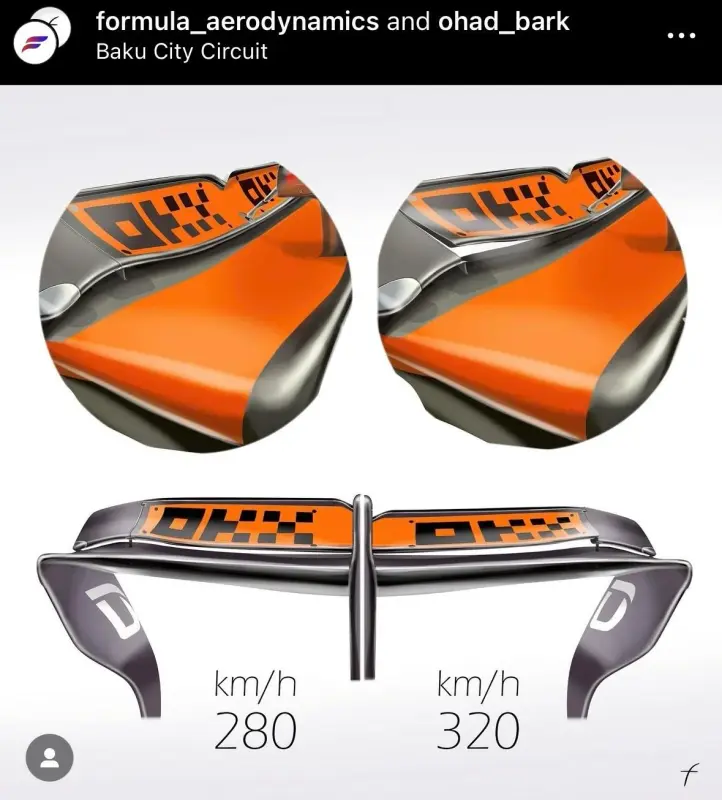Great presentation, thanks for that!
In this thread often read phrases like "ingenious" or "not to implement on other cars" are used. So I would like to remind here - aeroelasticity has been used deliberately and purposefully in F1 for 40 years! And there was already a similar solution on the Ferrari F248 in 2006, where the gap between the elements of the rear wing under load changed (one wonders whether Stella, at Ferrari at the time, remembered this idea).
So there is nothing "ingenious" about it, nor is there anything "not to implement", because every team knows exactly how to do it! Rory Byrne started this with his Benetton in the 80s with his front and rear wing brackets. In 1990 or 1991 Sergio Rinland developed a concave underbody for Forti whose sides curved downwards, in 1996 and 1997 Ferrari and McLaren had flexible front wings in 1999 flexible rear wings that bent backwards and diffusers that bent downwards for higher downforce. Especially in the late 1990s and early 2000s, aeroelasticity was used everywhere and Ferrari with Ross Brawn and Rory Byrne led the way and developed the flexible underbody in 2003, which was "copied" by Ferrari and Red Bull in 2022. In 2006 there was the "Slot-Gap Rear-Wing" where the gap between the lower and upper flap widened and the upper flap bent.
So what is done today is in no way "ingenious" or anything else - it all has been there before and every team knows exactly how it works and every team can replicate it and implement it in their car. It's just a lot of FEA work to get it in line with the load tests and the technology and talent in the design and carbon department determines whether the part bends more or less than the competition and how good the effect is and how exactly it is achieved.
Ultimately, aero balance is far more important and decisive than drag reduction, which is more of a positive side effect, even if this is, of course, just as intentional and deliberate. But aerobalance is ultimately much more important. Like the 1996 McLaren, today's F1 cars have a "natural" aero balance problem or the balance and weight distribution is not as you would like it to be, but first lets stay with the McLaren of 1996.
The 1996 McLaren had the problem that the the flap under aero loading twisted backwards, unloading the front downforce slightly. On corner entry when the driver braked, the flap load picked up again increasing front downforce causing oversteer. On corner exit the aero load increased, the flap twisted backwards again causing understeer at the exit of high speed corners. Aeroelasticity was the solution.
Finite element analysis on the mainplane and flap carbon composites was used to introduce some aeroelasticity in the mainplane. Neil Oatley and Matthew Jeffries designed the mainplane to have a 'tuned' beam stiffness so that at the outboard extremities it deflected towards the road by a prescribed amount and therefore increasing the downforce created by the mainplane as the speed increased. This occurred as the flap angled backwards which reduced the flap downforce. They managed to create a combined mainplane and flap aero map that was much more balanced as the two loading conditions cancelled each other out with speed.
Partly due to the regulations, partly because it is natural, today's F1 cars have certain characteristics and lack front-end grip at turn-in and rear-end grip at high-speed corners. So you use aeroelasticity to compensate for this. At low speed, you try to get a balance that gives more front end grip to get the car to react to the steering input especially on turn-in, at high speed you try to get the balance more rearward to give the car rear end stability. So basically, aeroelasticity is used in the same way as in the McLaren 1996.
I hope this almost 30-year-old example makes it clear that there is nothing ingenious behind today's Flexi-Wings or that a team has developed something here that others could not bring to their car. All these flexible bodywork elements have been around in F1 for a very long time and
whether it's bodywork parts that bend, twist, turn, bend backwards, open a gap or anything else - it's all been there and used for decades! Nothing ingenious or new! You're at least 25 years too late! Ultimately, it's just a bit of FEA work and design work to bring this to every car. The decisive and important point and how much it brings is ultimately only how controlled and precise you can get it and achieve the desired shift in balance. And how good the FEA, carbon and design department is. But the thing itself - larger gaps, bending, twisting, etc. - everyone knows exactly how to do it. But the more accurately and precisely you can achieve the desired shift in the aero balance and also the compromise with regard to the different tracks, the better the car will be. But also this is nothing new and was already the case almost 20 years ago.


